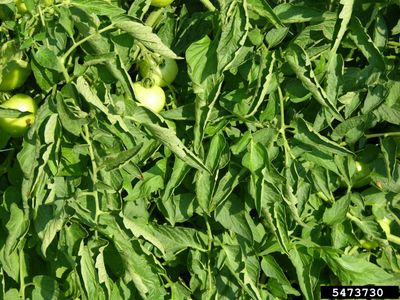Recognizing Physiological Leaf Roll in Tomato Plants
Curled tomato leaves can be caused by factors like disease, environmental changes, and even herbicide drift. In healthy plants, the causes of physiological leaf roll in tomato can be difficult to uncover. This is because the effect may be caused by one situation or the result of several, and nature has a place in the occurrence. This can make uncovering the reason a bit tricky. Seemingly healthy tomato leaves will curl or roll at the center, producing a loose cigar-like effect. The lowest, oldest leaves are affected initially. At first glance, it seems to be a response to lack of water or heat and that first inkling may be based in fact. Or it could be something else. The condition can occur at any time during the growing season and does not affect the stems, flowers, or fruit. It seems to occur more frequently in indeterminate varieties of tomato. Cultivars which produce high yields also seem to be more susceptible.
Is Physiological Leaf Roll Dangerous?
No information on physiological leaf roll on tomatoes lists it as an issue of concern. Since fruiting does not seem to be affected and plants remain relatively healthy, it simply produces unnecessary distress in the gardener’s mind. The plant will continue to produce and grow until the end of the season. In order to calm any fears, it is important to consider what might be contributing to the phenomena. Possible suspects include:
high nitrogen conditions
pruning during hot, dry periods
excess upper leaf growth during hot periods
transplant shock
heat or drought
root injury
phosphate deficiency
chemical injury
How to Treat Physiological Leaf Curl
Selecting determinate cultivars may be key to preventing physiological leaf roll on tomatoes. Keeping soil temperatures below 95 degrees F. (35 C.) by using mulch or evaporative cooling is also an effective strategy. Avoid overfertilizing and excessive pruning. Maintain consistent soil moisture and make sure young transplants are hardened off before planting outdoors. Be cautious when weeding around young plants to avoid damaging the roots. If you are spraying a chemical herbicide in the garden, do so when there is no wind to avoid unintended chemical injury. Plants can recover if conditions become more favorable and your tomato crop will be unaffected.
